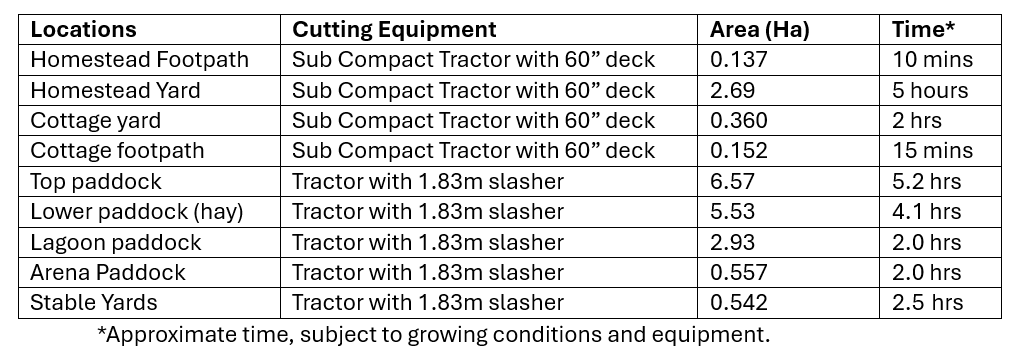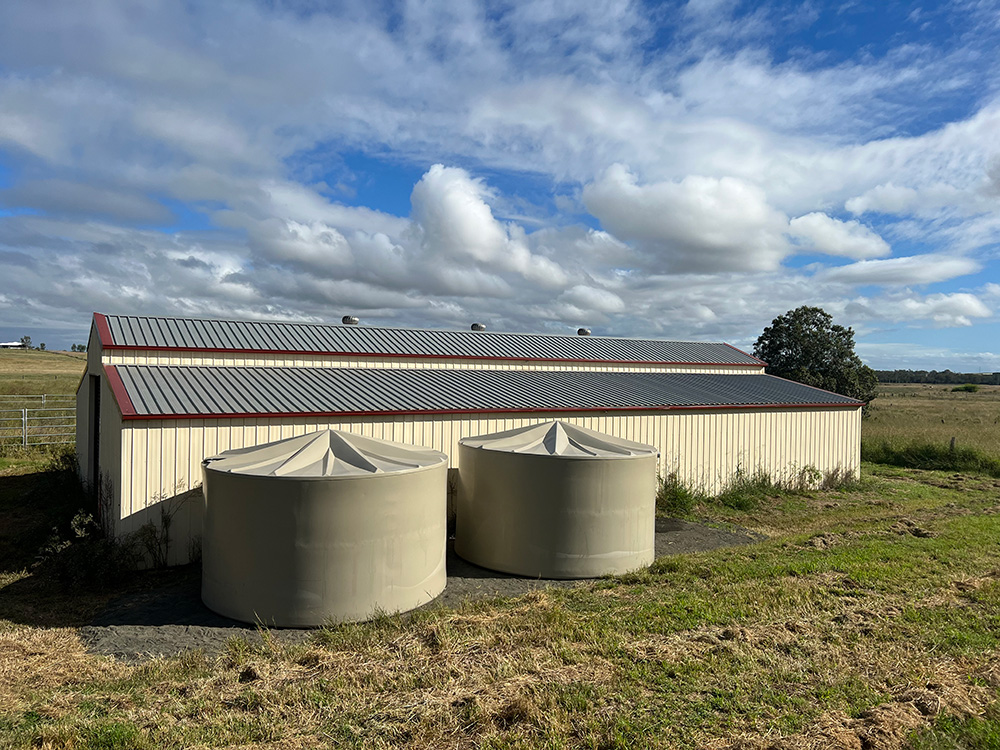There are many benefits to owning larger properties. Privacy, space to keep large pets, operate recreation vehicles or simply have a large garden. But with the additional space comes the increased time and resources to maintain it.
The hidden costs of acreage or estate ownership can catch many by surprise. I would however never warn anyone against making such move. Enjoying your younger years working in a cosmopolitan environment with restaurants, cinemas and nightlife within walking distance is a must. But once you settle down, nothing beats the lifestyle accommodated by sheer space and the majesty of nature. But I would be cautious to call it relaxing. It can be.
It makes sense to think of your acreage home as a business given the complexity and sheer costs. Certainly, some accounting skills are valuable when keeping track of capital investments and operating costs. However serious thought needs to be made before filing your tax returns. Let’s clear the air. This is not financial advice. Talk to your lawyer and accountant.
Tax minimisation
There are many good articles available that will run you through some aspects of tax minimisation, but be aware, it’s a fine line between ‘minimisation’ and ‘avoidance’. These should be used as conversation point with your account, lawyer or financial advisor.
In Australia accountants have some immunity from tax lodgements. You will be held liable ultimately should you be audited, and you may have to repay all refunds retrospectively. This will almost certainly cause significant hardships for many landowners.
Forget about suing your account or advisor for professional negligence. It’s problematic and expensive at best. There are plenty of people using loopholes to minimise their salary income against their acreages, but it’s a fallacy to say it’s legal. Google: argumentum ad populum. There are some permitted deductions but they come with conditions.
The expenses
Note: we have wound down our equestrian operations and I note agricultural operations can and do have much higher costs. I have worked with crop farmers. The following figures are based on our operations.
Paddocks
In the warmer months I’ll cut the homestead footpath and house yard as frequently as once a week. The lower footpath and house yard once a month. The paddocks generally 4 times a year, the Arena Paddock and Stabel years more frequently. And entire cut takes four to five days although it would be possible to do in a day with two people assuming there was no equipment maintenance due.

Machinery
We have 20 hectares (approximately 50 acres) of land. In our region this requires two tractors, a sub-compact 25HP and a 70HP full sized one. I made the decision to purchase new Kubota machines as I can demonstrate the total cost of ownership will be lower over a ten-year period. They typically have a higher purchase price but significant lower operating expenses and importantly almost no down time. Parts and consumables (like filters) are cheap and easily sourced.
Tractors
Your tractor should be seen as mobile power, it’s the muscle on the property and having a reliable one is important. I giggle to myself about noobies who buy vintage tractors. Most were not as reliable as modern tactors at the time. Get one by all means, but not as your first tractor.
There was an adage saying that you need one horsepower for every acre you intend working. For instance: a 50-acre farm needed a 50HP tractor. I’d suggest you start with 25HP as a minimum and add an extra 10HP. My larger tractor is 67HP and I’d wish I’d got the 90HP. Better to be overpowered slightly. Many more powerful tractors are turbocharged and actually offer better fuel economy.
I use my larger machine for general farm in the open paddocks, the smaller machine for constrained spaces such as around the shed and houses. It’s not mandatory to have two, but it allows for redundancy.
Exclusive of any implements or attachments these two machines could cost upward of $100,000 AUD but can be purchased on extremely low-interest finance packages along with any attachments purchased at the same time regardless of brand.
Spraying Equipment
Keeping weeds at bay is completely necessary if you want a healthy farm. In Australia we have a number of introduced species of plants that can and will become invasive, many are toxic to livestock and native animals. We have a neighbouring property that was held by the same owner (vendor) when we purchased ours 15 years ago. It stands as a living example of what would have happened if I had not started the restoration on our place. One of the issues is pasture degradation. Its currently infested with a number of woody weeds that will require to be cleared with heavy equipment at great cost.
There has been a big hoo-ha around the toxicity of various poisons on the market but the evidence is thin outside of some isolated cases in the US. I used to be more worried about handling poison, although today I still take precautions I’m using less simply because I’ve become more tactical with its use. Still, saying all this I primarily use regular slashing as the primary means to manage weeds. Its cheaper.

Pumps and Tanks
Water as they say - is life. I’ve spent a lot of time and money on our water infrastructure, which feels a little redundant given so many wet years. But the dry will come. I purchased this farm during a flood year. Within three years we had our first drought. Although the weather here has been mild and predictable, along with the air quality, it pays to prepare.
We have two supplies of natural water in the form of rainfall which is funnelled into approximately 124,000 litre of tank capacity and a lagoon that holds very approximately 2200m2 of water. We very deliberately looked for a property with a water course within the property lines after experiencing access problems on the previous one.
We have a lot of roof area, most of it hooked up to tanks, and to be frank, roof space is the most expensive part. Over the previous year we have a theoretical collection of 1,1million litres on the rain tanks alone. The tanks, pipes and pumps are cheap in comparison and all farm Infrastructure costs money to maintain. Dams are probably the cheapest option, but because evaporation is brutal, they are not a complete solution. For instance, our pool can lose half an inch of water on a hot windy day. That’s approximately 3500litres.
Water tanks vary on cost based on material and size. We have both inground concrete (the most expensive) and above ground polyurethane (the cheapest). Prices range from 25c per litre to 55c - not including installation. Concrete tanks are typically buried to support the structure. It’s a costly exercise however it’s the longest lasting and aesthetically pleasing option. You have beautifully cool water year-round. Tanks don’t lose water like dams presuming you have no leaks. I still love a good dam, but I wouldn’t invest until I had as many tanks as I could fill with my roof area.
I should disclose we have a mains water supply - it is currently disconnected due to frequent leaks. The water supply utility, although once admitting to higher-than-normal pressure would not accept any responsibility of the repeated burst pipes and it became a liability.
Consumables
I have never found any of the CapEx 2 OpEx ratios offered on farming blogs to be accurate. It depends on what you’re doing and where you’re doing it. Weather and soil have a huge impact on what work needs to be done. We for instance have incredibly fertile soil and at times significant rainfall, however not all plants like that. The variation in temperature and humidity in this area needs to be experienced to be comprehended. Almost none of the crops we’ve attempted to grow did well for more than one season. The soil on our property is known as ‘black soil’ (Type E for ‘extreme’) It’s like melted chocolate after rain, like granulated instant coffee when its dry. Unless a plant can cope with these extremes it will only survive a few seasons. We have trees that ordinarily might look 5 years old but are in fact 50. The constant cracking of the soil has caused a bonsai effect. Perhaps the biggest cost of the soil is building foundations, underground pipes and fence posts. I describe the soil here as a slow moving ocean.
Servicing machinery is a constant battle. Because of our dusty winters I need to change air filters yearly regardless of use. Because of the condensation all fluids even unused fuel. This is why purchasing a popular brand of machine makes sense. Access to spare parts at a reasonable price and in a timely matter is important.
Tools and the Workshop.
After twenty years of hobby farming, I am still occasionally surprised at what I have managed to repair myself. Hobby farmers will need a plethora of oil changing equipment. Oil pumps, funnels, catchment tubs and trays. You will need disassembly and reassembly tools like ratchet guns and socket sets. You’ll need a wielder. A crane, a truck and a tailer. Importantly, you’ll need somewhere to put all this with enough room left over to work. I have a rather excessive 764m2 of undercover area. Although this does not stop the inevitable game of Big Boy Tetris every time I want to find space in the sheds.
Taking all of this into account I can forgive someone of thinking they are running an enterprise. It walks like a duck after all. But like depreciation, it’s a term with two meanings. The tax department might not have sympathy for your self-inflicted wound. Unless you are seriously undertaking a commercial enterprise and intend on returning a profit to your shareholders, I’d suggest it’s a hobby. Look after your equipment and infrastructure and hope the next buyer holds your passion.